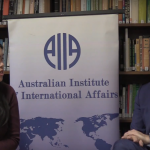Australian seniors living below the poverty line
A social change strategy group is investigating the complex issue of raising poverty rates among Australia’s senior citizens. Here they explain how this disconcerting trend could be reversed.
From the onset of adulthood, the expectation is that the next 40+ years are spent working to care for oneself and loved ones. At the end of this period retirement awaits: a time to enjoy the remainder of one’s life pursuing any interests of desire. For some Australians, this is achievable due to earning large salaries throughout their career. For others, this is not possible. Unforeseeable interruptions such as illness, parenthood and a changing job market interfere frequently. High cost of living prevents many senior citizens to afford even the basic standards of living to maintain health and well-being, which is a human right as defined by UN’s declaration of Human Rights.
Australia’s Government needs to undertake a comprehensive overhaul of the Australian aged pension system.
By 2050, 28.3% of the Australian population will be of senior age. If nothing changes, the number of elderly Australians living in poverty is set to rise even further. While systemic policy change requires comprehensive research and expertise, the following suggestions indicate a range of potential strategies gathered from examples of international precedent.

An immediate increase to pension benefits:
Increasing pension benefits relies on the government making pensions an economic priority. Currently the Australian government contributes 3.5% of GDP on the pension, below the OECD average of 7.9%. We are calling for the federal government to match the OECD average. Additional revenue could be channelled into pensions with a tightening of tax incentives on contributions to voluntary schemes (especially for high income earners).
Address inequality in superannuation over the lifespan:
Short careers or career gaps substantially reduce superannuation entitlements. This issue is especially pertinent for women (who may have been full-time mothers or worked only part time throughout their careers), but also for the long term unemployed or those forced to cease work prematurely due to illness. Various strategies can cushion the impact of missing years of contributions: awarding retroactive pension credits, referencing pension/super payments on the best years of earnings or granting pension credits for each child born.
Assist elderly Australians (that are willing and able) to remain in the workforce:
With an aging population the Australian pension system needs as many people as possible to remain in the workforce and paying tax. Currently the system is flawed with many people over 55 having difficulties to find work due to age discrimination. Encouraging older Australians to remain in the workforce needs provision of structured programs that explore possibilities of combining work and pensions (e.g. paid mentorships), bolster financial incentives to employers to hire older workers and encourage training and upskilling in later life.
Transfer responsibility from Federal to State:
The Swedish “Care of Elderly” reform transferred responsibility of elderly care from the government to local councils. Globally, Sweden ranks third in the quality of life, wellbeing and income stability of older adults.
In Australia, the role of the government could become restricted to a legislating, facilitating and controlling body, overseeing the management and planning of care. Detailed planning, allocation of resources and funding is allocated to the state governments, accounting for approximately 90% of the responsibility. Therefore individuals would pay their tax contributions to the state they reside in. To avoid cooperation issues, lack of continuity and inefficient utilisation of resources explicit rules, role definitions and clear communication systems are vital. To ensure compliance and quality care within the states, annual grants from the government are essential. This “Pay for Performance,” in form of financial rewards and incentives, motivates care of the elderly population. Granting of these is informed by state achievements, such as reducing hospitalisation, chronic conditions and increasing competency standards of employees. Elderly care would consequently be funded by state taxes and government grants.
Prevention:
Change to social welfare of Australians requires planning of long-term preventative measures. By targeting the Australian Youth (representing approximately 13% of the population) social stability of the pension can be improved. Approximately 300,000 young Australians are unable to find work, accounting for over a third of Australian Job Seekers. These alarming statistics pose a detrimental impact on social welfare. Youth today enter a low-skilled, inexperienced workforce that is vulnerable to economic conditions. Consequently, youth unemployment and welfare dependence is rising.
Addressing high unemployment rates of young Australians requires: increasing literacy and numeracy of school leavers, assessing transition to work opportunities, boosting skills and amending welfare payment incentives. Young Australians should be encouraged to adapt a forward thinking mentality by introducing retirement reforms that guide them to plan for the latter day.
Integration of refugees in Australia:
A growing gap exists between the number of retirees and the number of workers required to provide adequate pensions to senior Australians. This gap is due to increased longevity in retirees and decreased birth rates among younger generations.
European countries, such as Germany, are addressing this gap through the influx of refugees. Approximately 78% of Syrian refugees who entered Greece in 2015 were under the age of 35 with 43% holding a University degree and a further 43% holding a high school diploma. These findings suggest that a large proportion of refugees arrive in host countries at an optimal age and with sufficient qualifications to enter the workforce.
Despite necessary short-term investments, long-term outcomes of refugee integration benefit host countries’ economies. Long-term GDP improvement is caused by increased consumption and production rates and development of infrastructure as stimulated by population growth.
Success for this strategy depends on successful integration of refugees in the host country (and its workforce). Factors to consider include: language acquisition of refugees, education and skill levels, qualifications recognition, legal right to work and employer openness.
“Senior citizens should be entitled to enjoy a rich and dignified life after years of
contribution to society.” (Helping Hand)
The above outlined strategies are intended to stimulate thoughts and discussion around how to address the important issue of elderly poverty in Australia. If you feel compelled to act, please take a minute to sign our online petition.
Co-authors Zara Hoskinson, Tayla Lundin, Jessie Phillips and Chris O’Dowd are all Graduate Occupational Therapists at the University of Queensland and have worked in various clinical areas of OT and community development within Australia.
As part of a social change strategy group, they are investigating the complex and disconcerting issue of raising poverty rates among Australia’s senior citizens. The aim of the group is to affect socio-political change and advocate for the rights of marginalised groups, whose social, occupational and social rights are compromised by external factors.
Jantje Lezius is a Graduate Occupational Therapist (OT) at the University of Queensland (UQ). As an OT graduate she has actively been involved in advocating for various marginalized and disadvantaged population groups in urban and rural Australia. Internationally, she has worked in community development with health and disability services in Timor L’Este.














